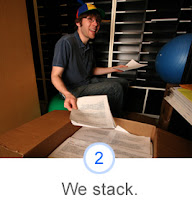


Everyone loves Gmail. But not everyone loves email, or the digital era. What ever happened to stamps, filing cabinets, and the mailman? Well, you asked for it, and it’s here. We’re bringing it back.
These are the lines with which google introduces its new service Gmail Paper on April 1st. Not to mention the same day marks anniversary celebration of introduction of all controversial gmail.. First to tell u what gmail paper is all about. Its a service that would allow u to convert the softcopy of ur mail in ur inbox to hard copy in ur mailbox.
Crap! That was my response on hearing that, coz the primary importance of email is quicker paper free communication. But when Google is considered anything is possible. It might possibly be a April Fools Day stunt. If you remember thats what world had to say when google introduced Gmail last year on the same day.
So whatever it is, a prank or reality only one word from my point of view " we are loving it! " .